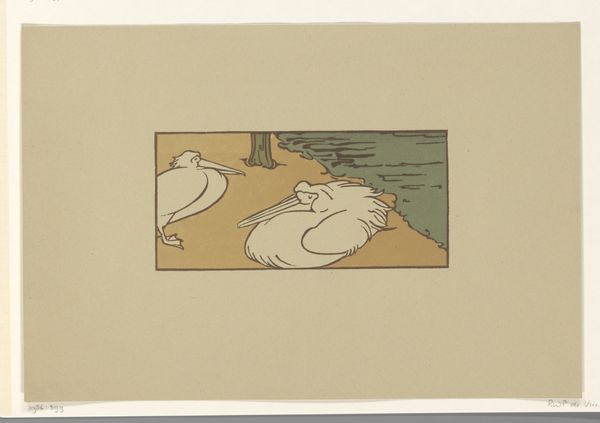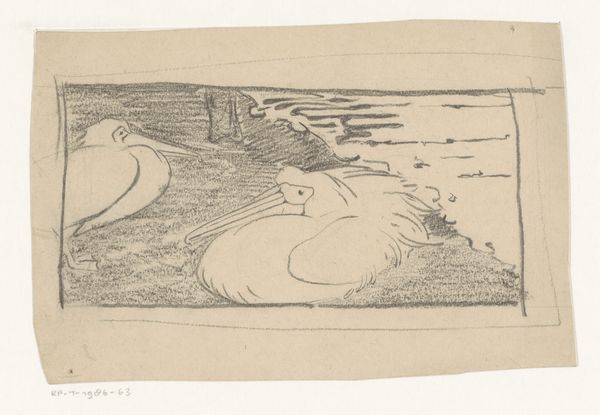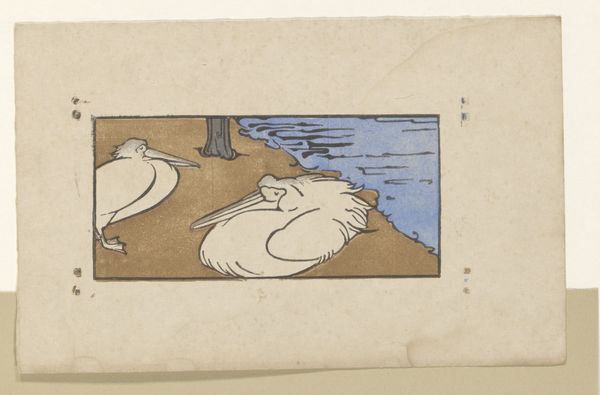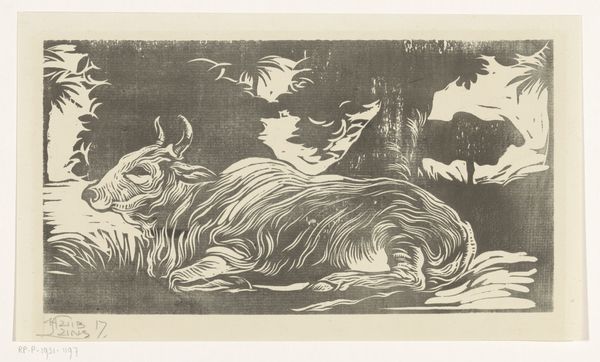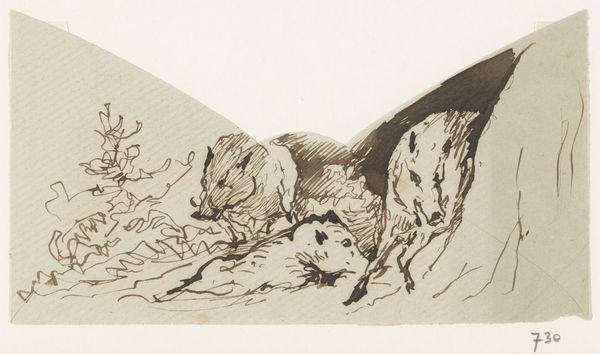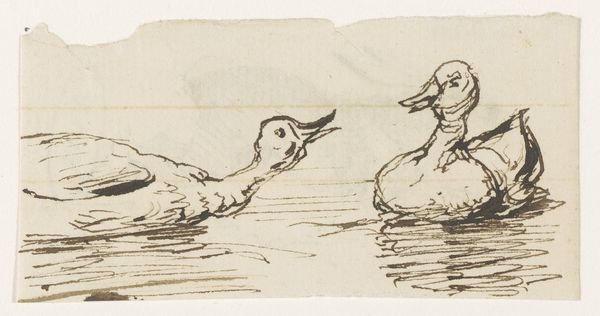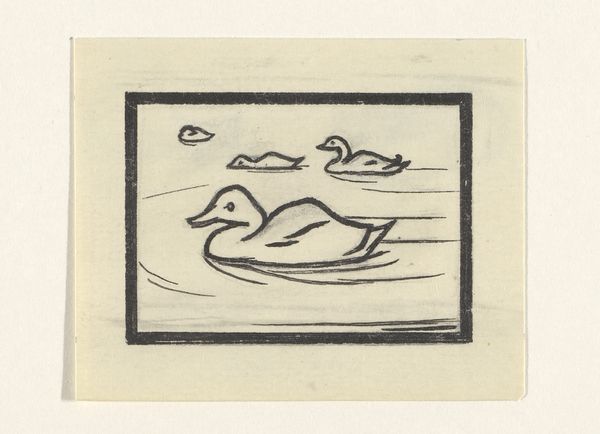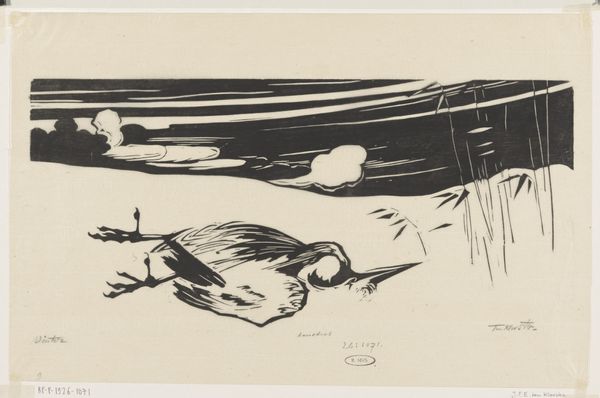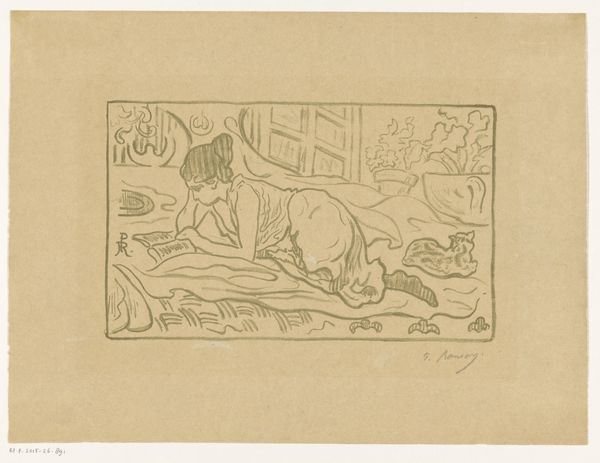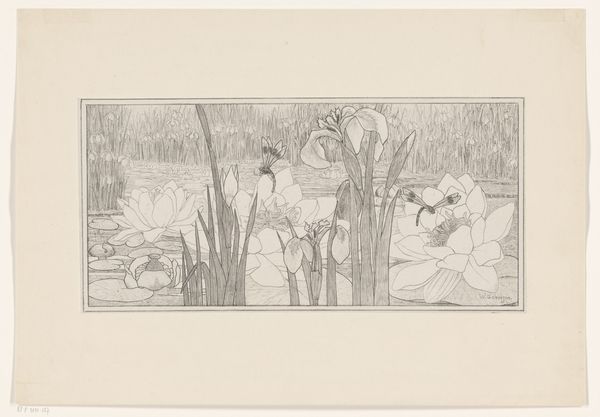
#
art-nouveau
#
animal
# print
#
landscape
#
caricature
#
cartoon sketch
Dimensions: height 92 mm, width 168 mm
Copyright: Rijks Museum: Open Domain
Editor: This print, "Two Pelicans at the Waterside," created between 1884 and 1904 by Reinier Willem Petrus de Vries, showcases these creatures in such a simple and, dare I say, humorous style. The limited colors and flattened forms are really striking. What draws your eye when you look at this? Curator: What grabs me immediately is the process, its very production. This is a print, likely a woodcut or linocut, judging by the flatness and sharp lines. Think about the labor involved: carving the block, inking it, pressing it. De Vries is engaging in a form of mass production, making multiples accessible. Editor: That's fascinating. I hadn't really thought about the labor involved, just the image itself. Curator: Exactly. And notice the stylistic choices. It’s labeled Art Nouveau, a movement deeply concerned with challenging the hierarchy between fine art and decorative craft. The print medium allowed for distribution outside elite circles. De Vries takes a “high art” subject—landscape and animals—and renders it through "low art," commercial processes. What's he trying to say about art's accessibility? Editor: I suppose he's breaking down the barriers between what's considered 'high' and 'low' art, maybe democratizing art through printmaking. Curator: Precisely. Consider also the role of "exotic" animals like pelicans in European culture at the time. Were they fashionable? Were they signs of Dutch colonial ambitions? The print is no simple cartoon; it is embedded in a network of meaning and means. Editor: Thinking about the print as a product of labor and a reflection of cultural attitudes really shifts my perspective. I now appreciate this seemingly simple print in a far richer way. Curator: Me too. Analyzing the materiality reminds us of the complex economic and social context that birthed it.
Comments
No comments
Be the first to comment and join the conversation on the ultimate creative platform.
